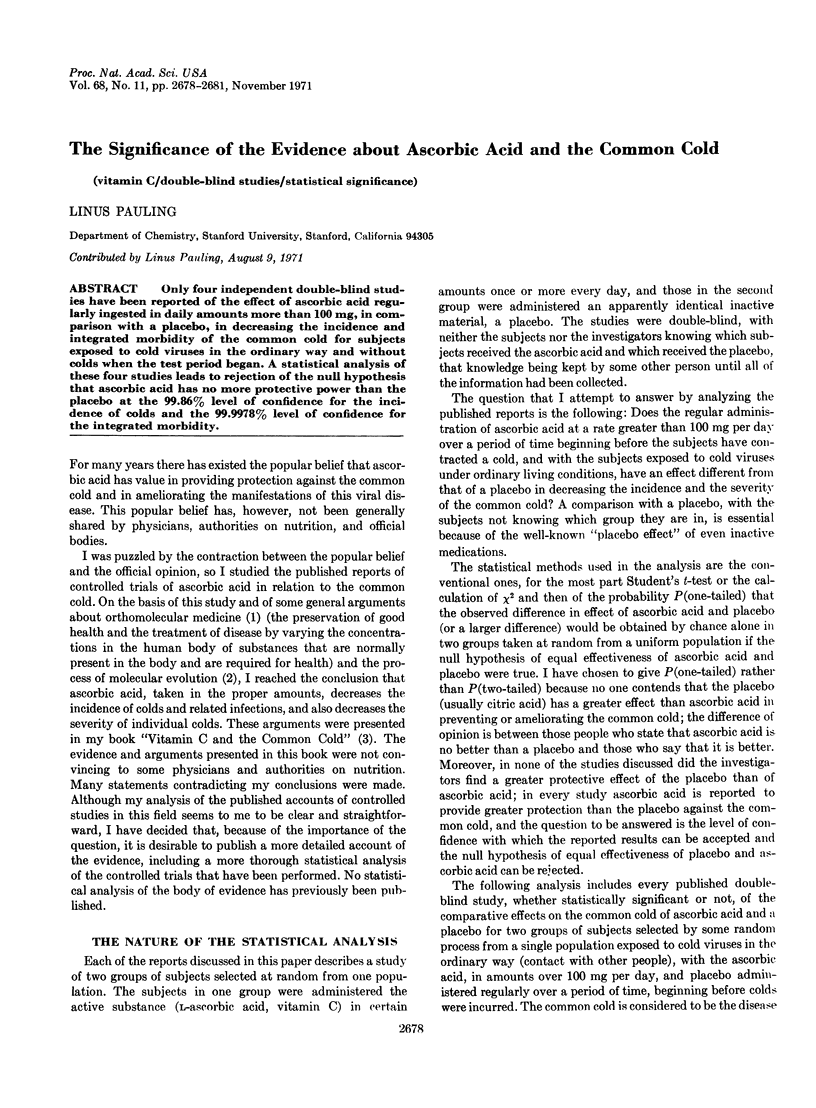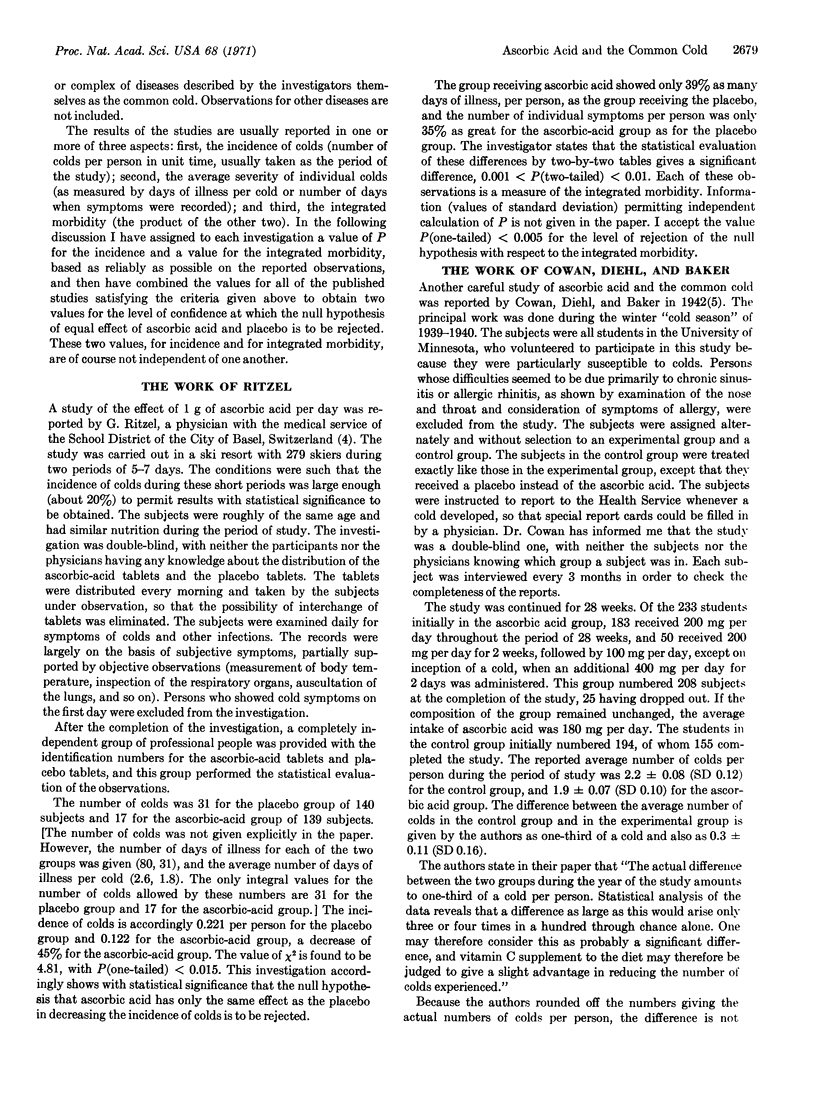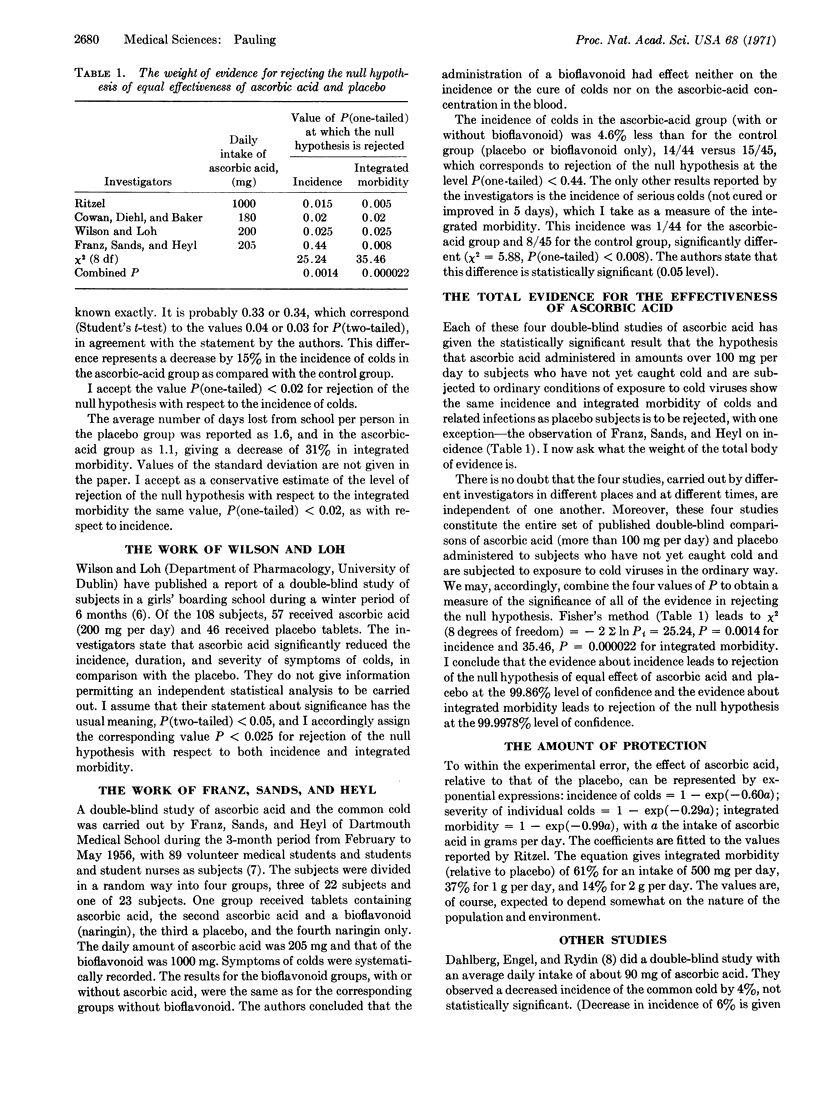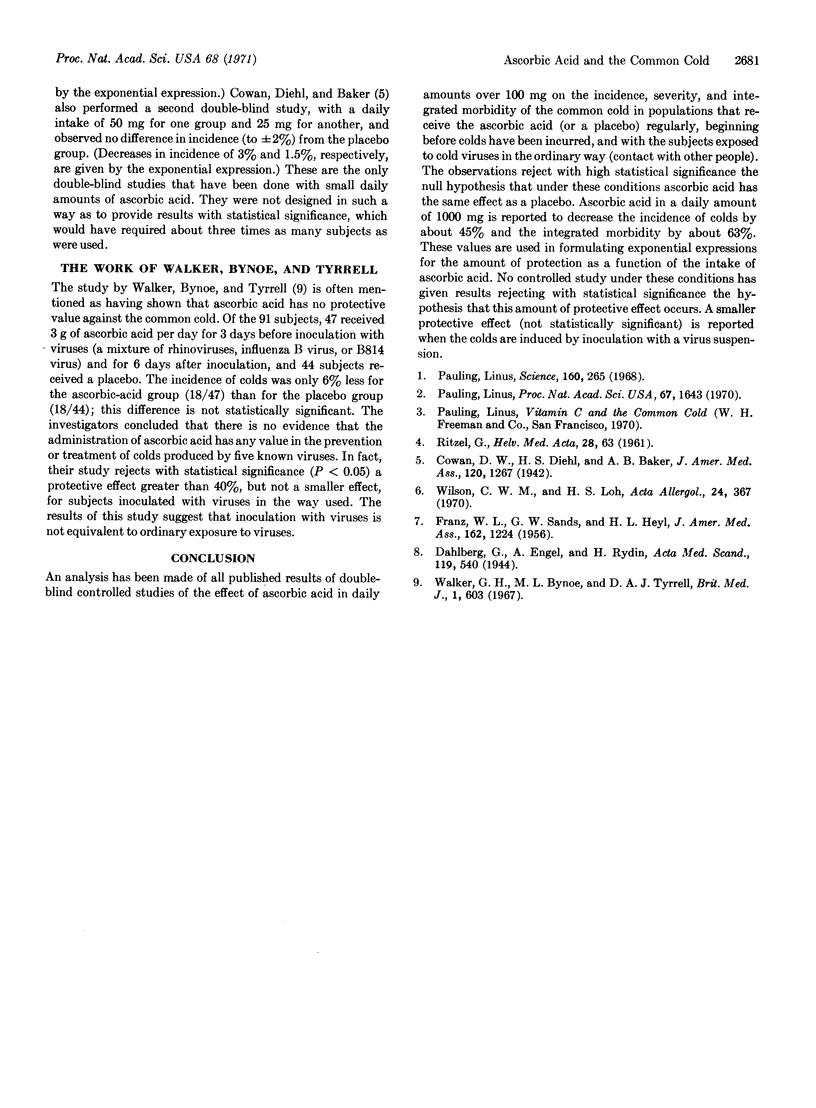Abstract
Only four independent double-blind studies have been reported of the effect of ascorbic acid regularly ingested in daily amounts more than 100 mg, in comparison with a placebo, in decreasing the incidence and integrated morbidity of the common cold for subjects exposed to cold viruses in the ordinary way and without colds when the test period began. A statistical analysis of these four studies leads to rejection of the null hypothesis that ascorbic acid has no more protective power than the placebo at the 99.86% level of confidence for the incidence of colds and the 99.9978% level of confidence for the integrated morbidity.
Keywords: vitamin C, double-blind studies, statistical significance
Full text
PDF



Selected References
These references are in PubMed. This may not be the complete list of references from this article.
- FRANZ W. L., HEYL H. L., SANDS G. W. Blood ascorbic acid level in bioflavonoid and ascorbic acid therapy of common cold. J Am Med Assoc. 1956 Nov 24;162(13):1224–1226. doi: 10.1001/jama.1956.02970300024009. [DOI] [PubMed] [Google Scholar]
- Pauling L. Evolution and the need for ascorbic acid. Proc Natl Acad Sci U S A. 1970 Dec;67(4):1643–1648. doi: 10.1073/pnas.67.4.1643. [DOI] [PMC free article] [PubMed] [Google Scholar]
- Pauling L. Orthomolecular psychiatry. Varying the concentrations of substances normally present in the human body may control mental disease. Science. 1968 Apr 19;160(3825):265–271. doi: 10.1126/science.160.3825.265. [DOI] [PubMed] [Google Scholar]
- RITZEL G. [Critical evaluation of vitamin C as a prophylactic and therapeutic agent in colds]. Helv Med Acta. 1961 Jan;28:63–68. [PubMed] [Google Scholar]
- Walker G. H., Bynoe M. L., Tyrrell D. A. Trial of ascorbic acid in prevention of colds. Br Med J. 1967 Mar 11;1(5540):603–606. doi: 10.1136/bmj.1.5540.603. [DOI] [PMC free article] [PubMed] [Google Scholar]


